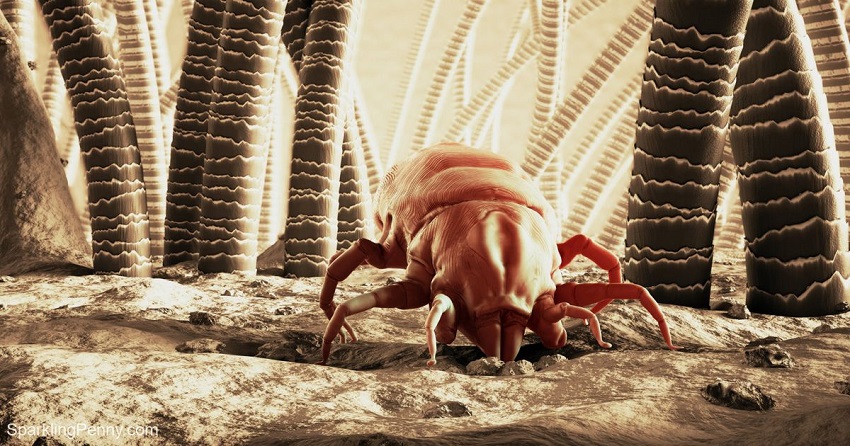Dust mites are microscopic pests that can be found in many households. They thrive in warm and humid environments, such as bedding, carpets, and upholstery. These tiny creatures feed on dead skin cells and can cause allergic reactions in some individuals. As a result, people often seek effective methods to eliminate dust mites from their homes. One natural remedy that is frequently mentioned is clove oil. In this article, we will explore the effectiveness of clove oil in killing dust mites and provide insights into its usage.
Understanding Dust Mites
Before delving into the potential of clove oil, it is essential to understand dust mites and their characteristics. Dust mites are incredibly tiny arthropods that belong to the spider family. These creatures are virtually invisible to the naked eye and thrive in warm, humid environments. They primarily feed on dead skin cells shed by humans and animals, making mattresses, pillows, and upholstery their favorite habitats. Discover does clove oil kill bed bugs?
Clove Oil and Its Properties
Clove oil is derived from the clove plant, scientifically known as Syzygium aromaticum. Its various properties make it a potential candidate for combating dust mites. Clove oil contains eugenol, which exhibits antimicrobial, antifungal, and insecticidal properties. These properties contribute to its potential effectiveness in killing dust mites.
The Potential of Clove Oil in Killing Dust Mites
Research on the direct impact of clove oil specifically on dust mites is somewhat limited. However, several studies have explored the efficacy of clove oil and its active compound, eugenol, against other types of mites and insects. These studies have shown promising results, suggesting that clove oil may potentially kill dust mites.
How to Use Clove Oil to Combat Dust Mites
To use clove oil effectively in combating dust mites, it is important to follow certain guidelines. Here’s a step-by-step approach:
Step 1: Dilution
Clove oil is highly concentrated and can cause skin irritation if used undiluted. Mix a few drops of clove oil with a carrier oil, such as coconut oil or almond oil, in a 1:10 ratio. This dilution will ensure safe and effective usage.
Step 2: Spray Application
Transfer the diluted clove oil mixture into a spray bottle. Spray the mixture onto areas where dust mites are likely to reside, such as mattresses, pillows, carpets, and upholstery. Pay extra attention to seams, crevices, and corners.
Step 3: Allow Time for Action
After spraying the clove oil mixture, allow it to sit for several hours or overnight. This will give the oil enough time to penetrate the habitat of the dust mites and potentially neutralize them.
Step 4: Vacuuming
Once the waiting period is over, thoroughly vacuum the treated areas to remove dead dust mites, waste, and other debris. Remember to use a vacuum cleaner with a HEPA filter for optimal dust containment.
Safety Precautions and Considerations
While clove oil can be a natural alternative for managing dust mites, it is important to exercise caution. Here are a few safety precautions and considerations:
- Always dilute clove oil before use to avoid skin irritation or allergic reactions.
- Perform a patch test on a small, inconspicuous area before applying the mixture to larger surfaces.
- Keep clove oil out of reach of children and pets.
- Avoid clove oil if you or any family members have a known allergy to it.
Alternative Methods for Managing Dust Mites
Apart from clove oil, several other methods can help manage dust mite populations in your home. Consider the following alternatives:
- Regularly wash bedding and pillows in hot water to kill dust mites and remove allergens.
- Use allergen-proof covers for mattresses, pillows, and cushions to create a barrier against dust mites.
- Maintain a clean and well-ventilated living environment by regularly vacuuming and dusting.
- Keep humidity levels low, as dust mites thrive in humid conditions. Use a dehumidifier if necessary.
Conclusion
While the direct impact of clove oil on dust mites requires further research, its properties and the results from studies on similar pests make it a promising natural remedy. When used correctly and with other preventive measures, clove oil may help reduce dust mite populations in your home. However, it is essential to prioritize safety and consider alternative methods for effective management.
FAQs
Q1: Is clove oil safe for pets?
A1: Clove oil can be toxic to pets, particularly cats. It is best to keep pets away from areas treated with clove oil to avoid any potential harm.
Q2: Can I use clove oil directly on my skin to treat dust mite bites?
A2: Applying undiluted clove oil directly to the skin is not recommended, as it can cause irritation. Always dilute it with a carrier oil before topical application.
Q3: How often should I apply clove oil to combat dust mites?
A3: It is advisable to repeat the application of clove oil every few weeks or as needed to maintain the desired effect.
Q4: Can clove oil eliminate dust mites from my home?
A4: While clove oil may help reduce dust mite populations, it is unlikely to eliminate them. A holistic approach that includes regular cleaning and preventive measures is necessary for long-term management.
Q5: Can I use clove oil on all types of fabrics?
A5: Before using clove oil on fabrics, perform a patch test on a small, inconspicuous area to ensure it does not cause discoloration or damage.







